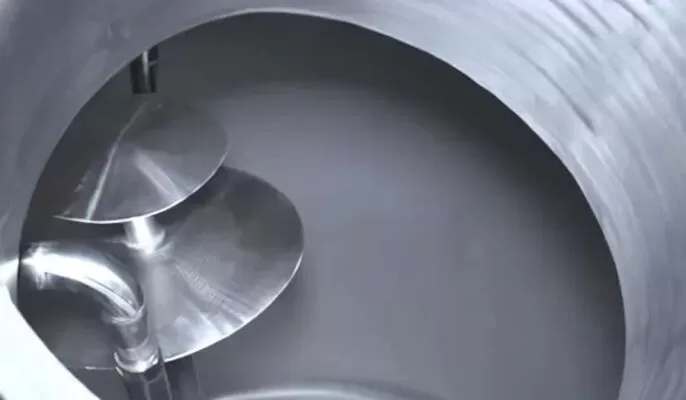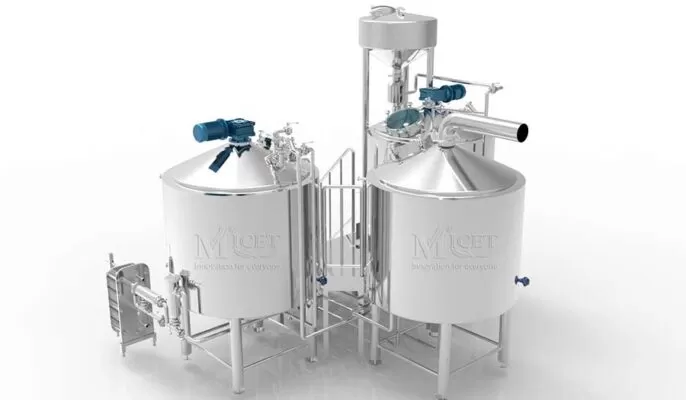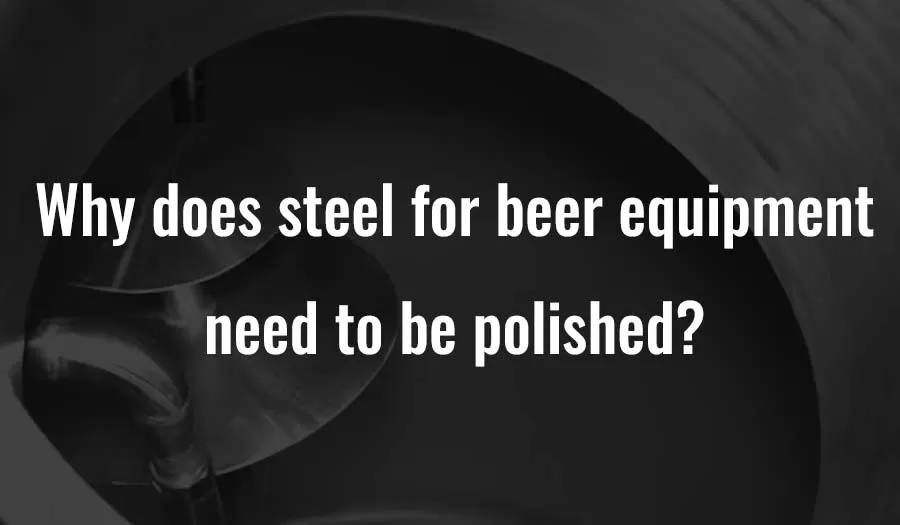Stainless steel surface polishing is a process that involves rubbing and polishing to give it a mirror-like finish. Polished stainless steel is easier to clean and disinfect. Since the polished surface has no pits or grooves, it can be cleaned using high-pressure cleaner spray or other disinfectants such as bleach. Polished stainless steel helps prevent the growth of bacteria and other microorganisms by preventing them from adhering to the surface of kegs, tanks, pipes, etc.
Polished stainless steel
Polished stainless steel is more resistant to corrosion, so it helps you get the most out of your equipment. For example, polished stainless steel is more hygienic because it is easier to clean and does not keep dirt and bacteria like unpolished stainless steel.
Another benefit of polished stainless steel is its appearance. A mirror finish makes any piece look more modern and attractive than its unpolished counterpart.

Welding and high temperature treatment
Welding and heat treatment are two important factors to consider when choosing steel for your brewing equipment. Welding is a joining process that joins two pieces of metal together by heating them until they melt and then cooling them together. The result is usually a seamless joint that is stronger than the original metal.
High temperature treatment involves heating the steel to high temperatures (approximately 1500° F) to increase its strength and durability while increasing its resistance to corrosion and eliminating internal stresses caused by high temperature cooling after welding.
Food hygiene requirements
Food hygiene is important and required by law and health authorities. In fact, there are several different levels of food hygiene standards that need to be met. Not only does it impact your customers’ safety, but it also impacts their perception of your brand.
The Brewery Equipment Institute states that polished stainless steel will not inhibit the growth of bacteria or mold due to its smooth surface; but, it can cause serious problems if water containing harmful bacteria comes into contact with such metal (and then food).
The impact of mechanical polishing on beer equipment
To polish a surface , you need to know its true color. When the oxide layer on steel is removed, it exposes the pure metal underneath. This is useful for determining if your equipment is rusty or if there are any contaminants present in your beer process. Polishing also removes any dirt or oil that may have accumulated on that part of the device during use, which can affect the taste of your drinks later!
Beer equipment production and polishing process
- Seam weld the stainless steel plate into a cylinder and cone bottom.
- Weld the pit plate to the bottom of the cylinder and cone.
- Grind the inside of the cylinder. First, workers polished to remove some obvious welding slag. use professional machines with different abrasive belts for further polishing, 80 mesh belt (RA=0.2mm) → 120 mesh belt (RA = 0.12mm) → 240 mesh belt (RA = 0.6um) → 400 mesh belt (RA = 0.2 ) mm) micron). When the mesh belt is 240 mesh, the RA in the tank is 0.4-0.6um, and the tank is hygienic and can be used for brewing beer. For some strict breweries, they will must RA to be lower than 0.4um, so we will use 400 mesh sand belt to improve polishing accuracy. Sand the inside of the base of the cone. Same as cylinder. Polishing disc top. Same as cylinder and cone base.
- Assemble and weld the top, cylinder and bottom together.

Beer brewing equipment
Interior: Omit pickling and passivation treatment, internal polishing to 0.2~0.4μm without dead ends.
Exterior: The surface is protected by an oil film drawing board and the welds are polished.
High quality stainless steel beer brewing equipment
Micet beer brewing equipment is a high-quality product that uses a variety of processes to ensure your equipment is perfect. First, we perform an pickling and passivation process, which means we remove any contaminants from inside the equipment. Then we polish it to 0.2~0.4μm without dead corners, which ensures that all parts are smooth and shiny. The outer surface of the Micet beer brewing device is protected by an outer oil film brushed surface, which helps to keep it looking new for a long time and makes cleaning easier. The welds are also polished so they won’t rust over time, so if you’re looking for something durable and reliable, this might be the perfect choice!




